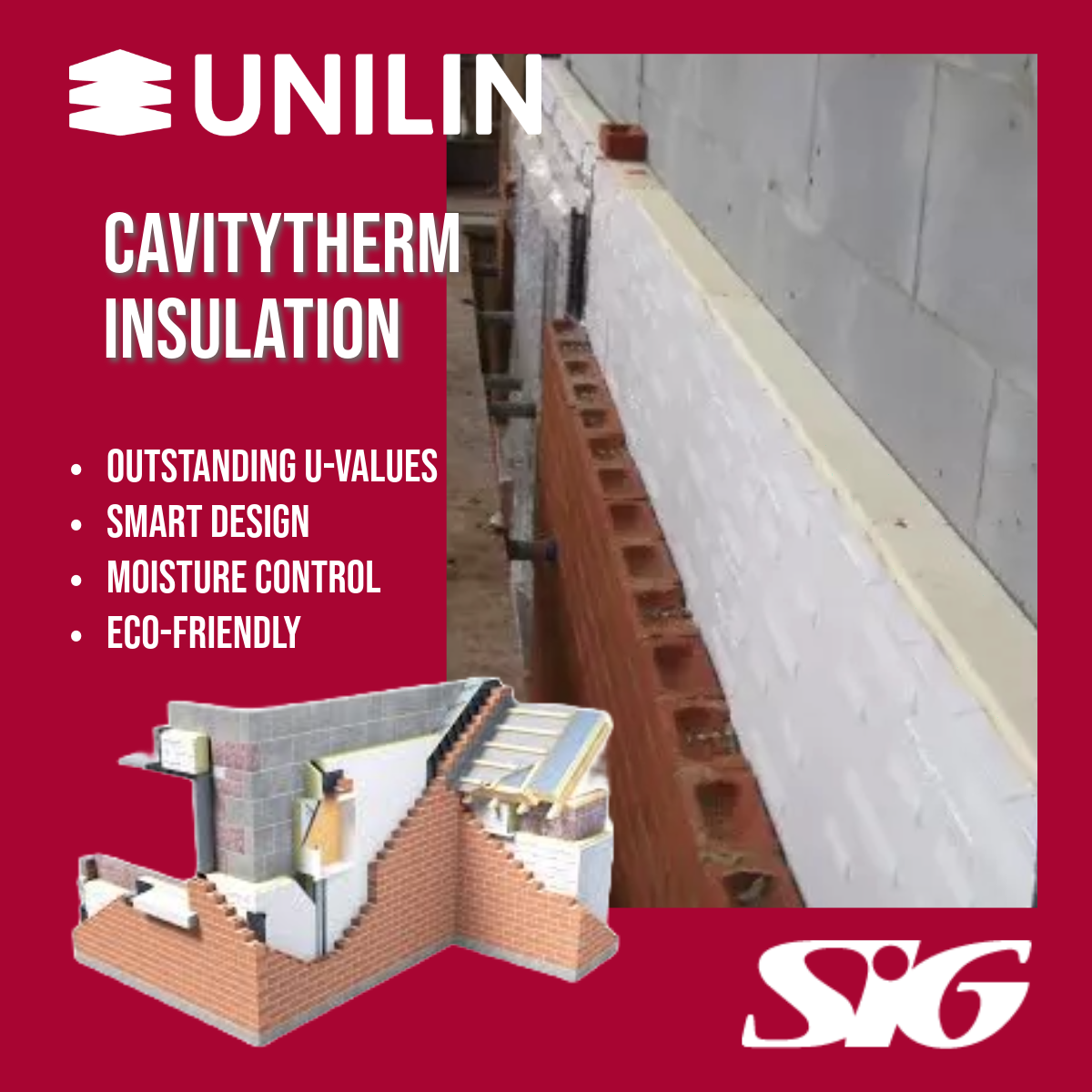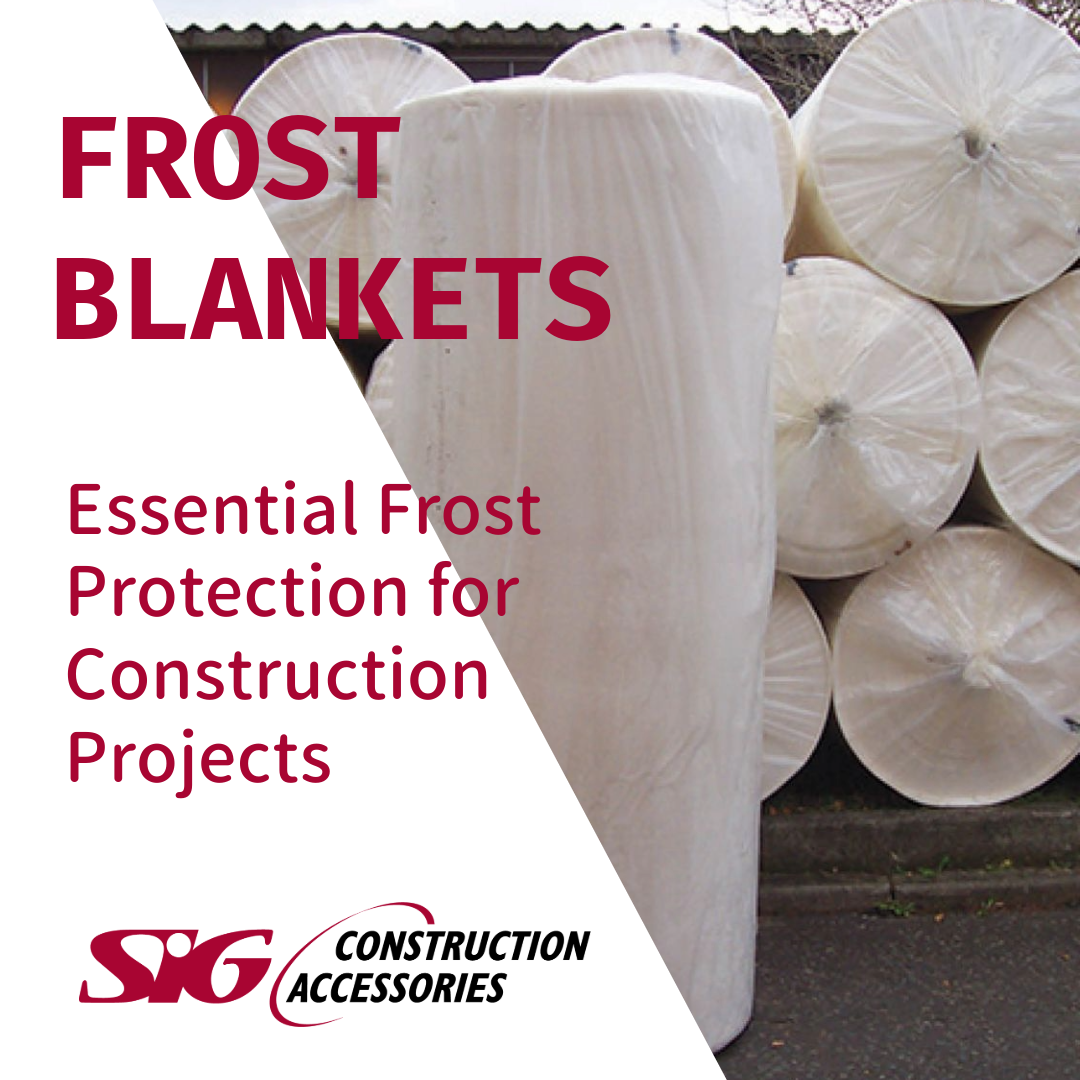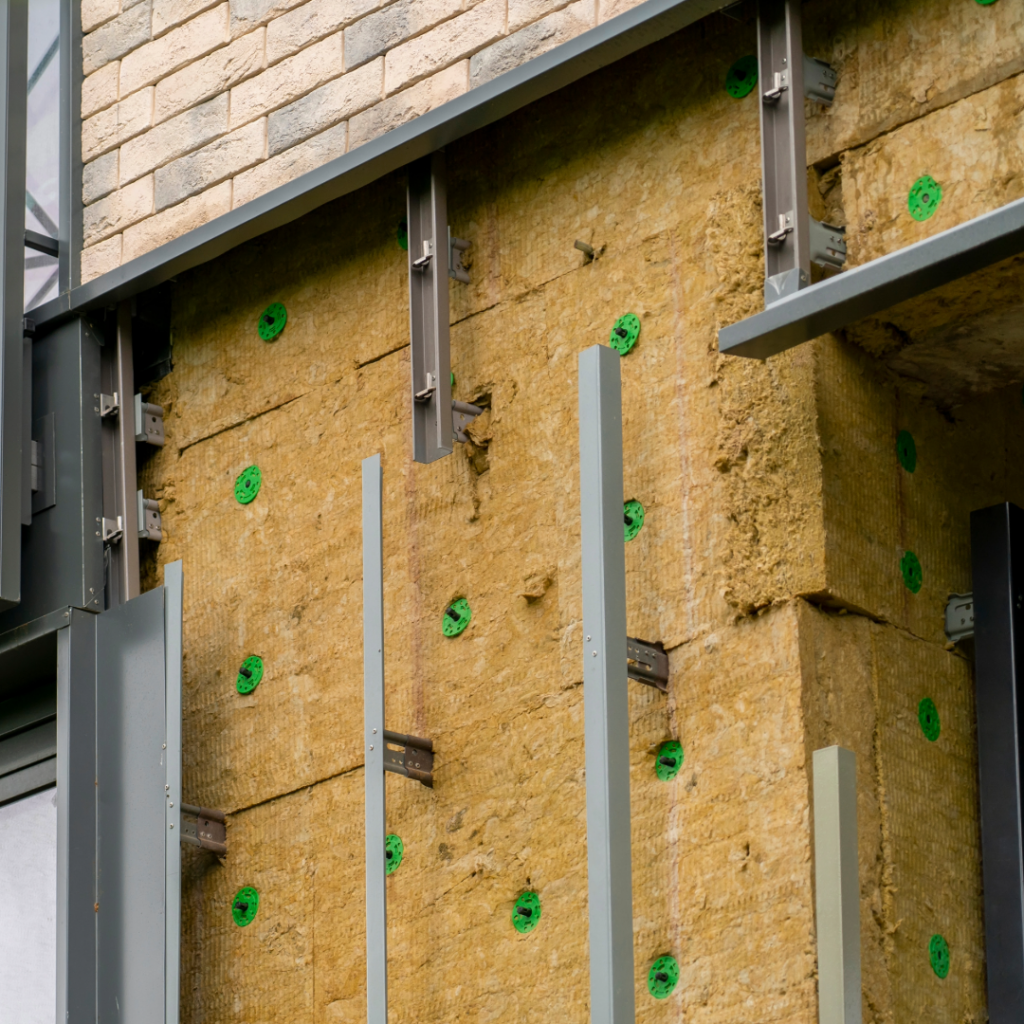 When working on new build homes and commercial projects, regulations now stipulate that a certain level and thickness of insulation should be installed. There’s a full list of regulations that apply in Ireland that you can find here, to make sure your next project is compliant.
When working on new build homes and commercial projects, regulations now stipulate that a certain level and thickness of insulation should be installed. There’s a full list of regulations that apply in Ireland that you can find here, to make sure your next project is compliant.
As long as you’re following regulations in terms of thickness and other aspects, does it matter which insulation material you choose to use on your next insulation project? Well, actually, it does.
Prioritising insulation that’s more effective results in increased thermal efficiency for your clients, meaning a better service from you and greater positive environmental impacts. Not sure how exactly the effectiveness of insulation is measured?
To figure out how efficient a certain type of insulation material is, you can figure out the U-value of the building structure you’re hoping to insulate and how insulation will affect it. The lower the U-value, the better insulated the space is, so you should aim for the lowest U-value possible in your construction projects.
But what is a U-value and why does it matter? Let’s dive in and find out.
What is the U-Value for Insulation?
A U-value measures the flow and loss of heat through a building’s structure, such as windows, roofs, walls, and flooring. Thermal transmittance, which is a fancy way of saying U-value, is the rate of heat transfer through a structure when there is a constant difference in temperature between each side of the structure.
The U-value is measured as the rate of heat transfer using watts per metre squared multiplied by Kelvin (written as W/m²K), but, the lower the better when it comes to U-values. This is because the lower the U-value, the less heat is lost. It’s important not to confuse this factor with R-values, in which you should always be seeking the highest number. R-values deal with the insulating material themselves, while the U-value refers to the performance of all the construction elements combined.
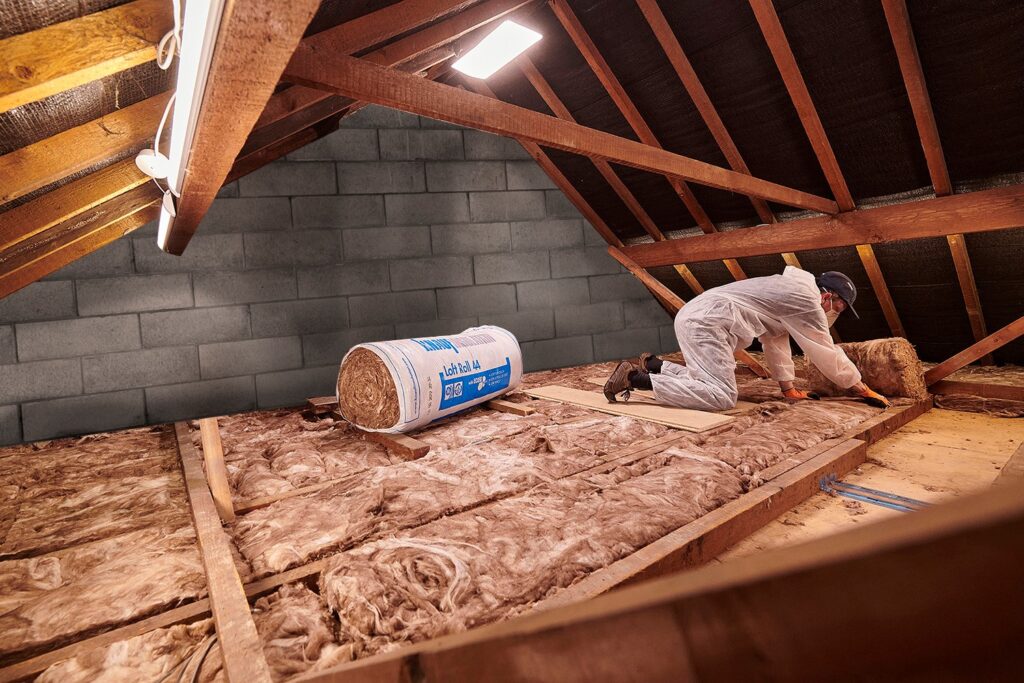 What Affects the U-Value of Insulation?
What Affects the U-Value of Insulation?
One of the biggest factors affecting the U-value is the workmanship when it comes to insulation installation. If insulation is poorly fitted with gaps and cold bridges left, thermal transmittance (and therefore the U-value) will be higher than anticipated.
The effectiveness of the insulating material will affect the U-value, too. You can find an insulating material with effective properties by working out its R or Lambda value (more on those later) or researching the best material for the type of property in question.
Why is U-Value Important?
Whether you’re installing insulation into an existing property or adding insulation to a new build, the purpose of the insulation for the homeowner is to reduce energy bills, slash their carbon footprint, and enjoy a property with a more consistent temperature. The lower the U-value, the more effective the building structure will be at lowering thermal transmittance. Simply put, we want as little heat loss as possible.
By prioritising a low U-value when installing insulation materials, you’ll create a better environment for the property’s residents, leading to happy customers and great reviews for your services. Plus, you’ll be doing your bit to reduce the Ireland’s carbon footprint.
What are Lambda Values?
Lambda values (λ, looks like an upside-down y), also known as K-values, measure the thermal conductivity of the material itself in W/mK. The better the insulation, the lower the lambda value because the rate of heat loss will be lower. The higher the number, the less effective the insulating material will be.
How is U-Value Calculated?
You can calculate the U-value by calculating the reciprocal of the sum of the thermal resistances of each material that makes up the section of the building (i.e. roof, wall, etc) in question. You’ll need to divide the thickness by the conductivity to get an accurate result.
If that calculation sounds a little long-winded to do by yourself, there are now plenty of online calculators that will do the work for you or you can request a U-value calculation from SIG’s Technical Building Solutions team.
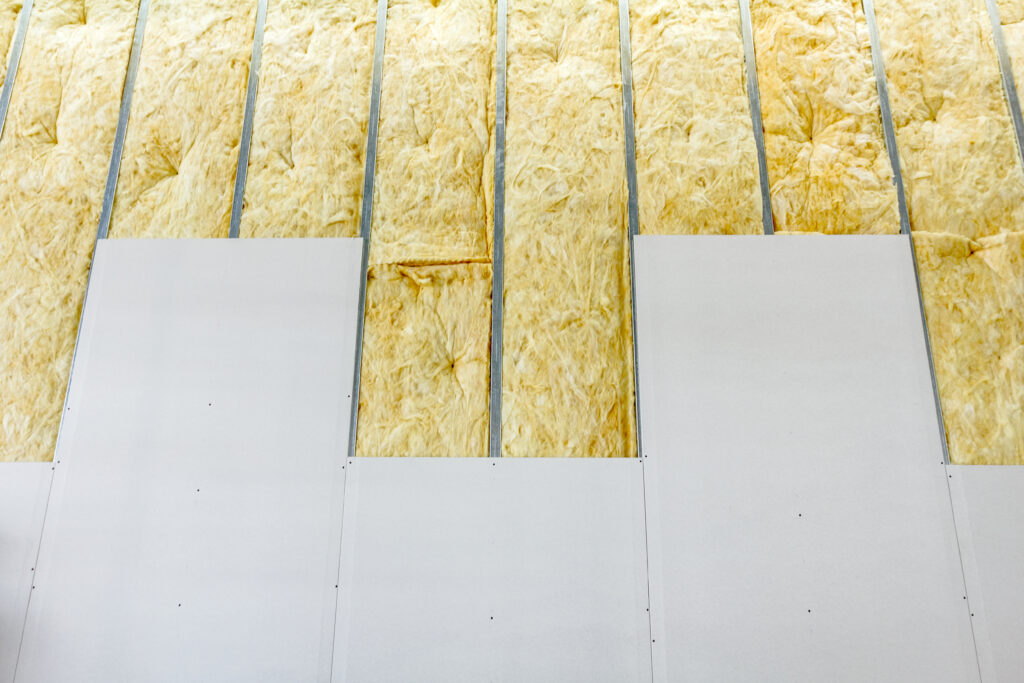 What’s the Link Between λ-Values and U-Values?
What’s the Link Between λ-Values and U-Values?
A R-value is a number that indicates how successfully a certain material resists the flow of heat. If the R-value is high, it resists the flow of heat effectively, and it’s considered a good insulation material.
You can calculate the R-value of a given material by dividing the thickness of the material (in metres) by its thermal conductivity (λ-value). The R-value is measured in metres squared Kelvin per watt (m2K/W).
To effectively decide which insulation materials you should use on a home, it’s worth considering both the λ-value and the R-value of a given product. The R-value of the insulation materials can be used to calculate the U-value of the building element in question.
By knowing both values, you’ll understand how effectively the building will prevent heat from escaping. From a practical point of view, the less heat escapes, the more thermally efficient the property will be, saving the residents on their energy bills and reducing their carbon footprint.
What Other Factors Should You Consider When Selecting an Insulation Material?
U-values and λ-values aside, there are plenty of other factors that impact the effectiveness of a given insulation material. Let’s explore some of the most important ones.
Moisture control
When considering which type of insulation to use in a property, whether the material is prone to causing condensation and damp or not is crucial. Insulation with good humidity control is a must-have for allowing residents to enjoy a safe and healthy home.
If you plan on insulating a space that holds a lot of moisture like a loft (where there’s also the potential of rotting the roof timbers), you’ll need to avoid an insulating material that’s known for causing damp or a lack of ventilation.
If you’re concerned about insulation causing damp issues, consider installing a form of vapour control.
Flammability
Fire safety should be at the top of the list of concerns for any property, so always choose a fire-resistant insulating material.
Some insulation can even protect against fires by slowing the spread of flames, which is the case for many mineral insulation materials.
Sustainability
Naturally, any type of insulation is good for the environment, because the less energy that’s required to heat a home, the better. Some insulation materials can still be more eco-friendly than others, however, mostly due to how they’re created and what happens to them once they’ve been used.
Materials such as glass mineral wool are often made with recycled materials (such as Knauf’s insulation solutions), making them ideal for the eco-conscious installer or homeowner. It’s also worth looking at how intensive the manufacturing process for the product is and whether it’s likely to have a high or low carbon footprint.
Resistance to pests
Whether it’s rodents or bugs, any type of pest can cause serious damage to a building’s structural integrity by burrowing into it – ditto with the effectiveness of an insulating material. To remove the risk, opt for an insulation material that’s pest-resistant.
Acoustic performance
While most homeowners are interested in thermal insulation, acoustic insulation, which is a type of soundproofing, is a priority for others. If you’re working on a project where reducing sound is a key concern for the customer, look for materials that offer some level of acoustic insulation, too.
Durability
Good insulation should last decades before you have to replace it. The longer your insulation lasts, the better sell you have to your potential customers, who are seeking a lifespan that’s as long as possible.
Expert Advice and Insulation Supplies for Your Next Project
Need to source your next project’s materials? We’ve got you covered.
Here at SIG, we’re Europe’s leading provider of specialist insulation brands, with a comprehensive range of wall, floor, roof, acoustic, and soffit solutions, all at affordable prices.
Alongside support and specialist knowledge from our expert team, your new build or refurb project will benefit from some of the best products in the business, to ensure your property is insulated with highly effective materials and minimise the risk of dampness and condensation.
We’re experts on all things U-values, too, so if you need help calculating the U-value of a building element, we’ve got you covered.
Whether you’re in the market for glass mineral wool or multi-foil insulation, we have a huge range of solutions to suit you, as well as breather membranes and vapour control layers to ensure that damp and condensation needn’t be a concern.
Ready to level up your next insulation project?
See what’s on offer now.

